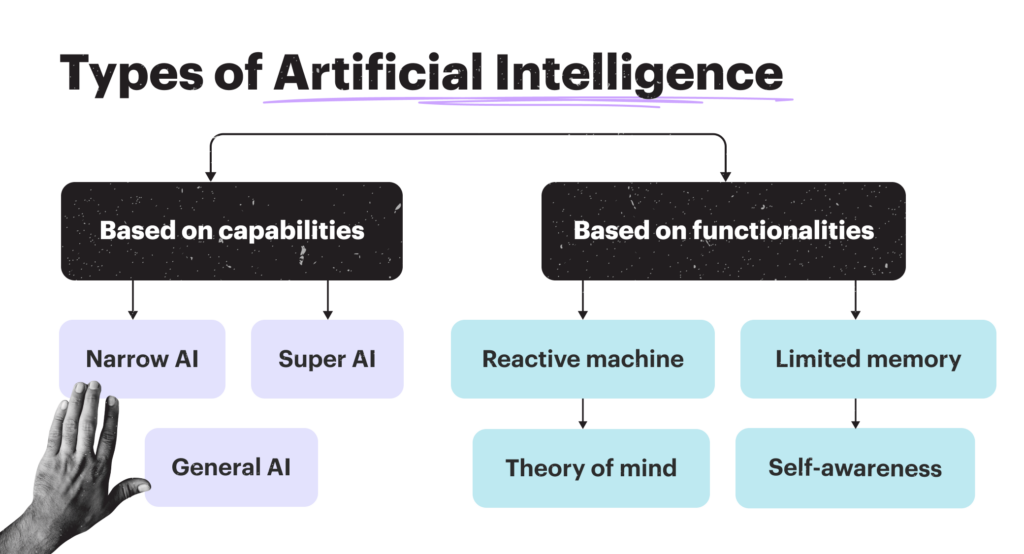
Since GPT-4 was released on March 14, 2023, and made publicly available via the ChatGPT chatbot, we’ve seen an overwhelming increase in conversations about AI technology. Some people exaggerated its possibilities to sell their courses or attract more followers. Others were objective from the start and considered AI a helpful tool for business processes and daily tasks.
A third of companies already use artificial intelligence in some form, which is a sign that this technology is here to stay. Businesses have started using AI everywhere, from hiring processes to writing code and developing websites. Of course, the quality of this AI-supported work can vary, but it’s there, nevertheless.
Artificial intelligence will undoubtedly become one of the main tools for conducting business analysis. With its ability to analyze vast amounts of data, AI will help you and your business with strategic planning and decision-making.
However, embracing AI solely because it’s a current trend can lead to many setbacks. You need to understand how to properly utilize AI in your business while being aware of the challenges that come with it.
Understanding AI and its relevance in business
Understanding how AI intersects with business analysis and why that would matter to you is only possible by grasping the basics of artificial intelligence and defining the buzzwords.
Computer science is a broad area that encompasses various theoretical and applied disciplines. Artificial intelligence is just one of many branches of CS, and the experts working in it aim to replicate human intelligence through machines or software.
AI includes the development of algorithms that can learn, solve problems, recognize patterns, and make decisions. There are two main types of artificial intelligence, Narrow, which specializes in specific tasks such as voice recognition, and general, which is self-explanatory.

General AI is mainly theoretical, and while many projects are being developed worldwide based on it, nothing can be truly classified as AGI. Instead, we will focus on narrow AI.
Machine learning, deep learning, and natural language processing are important subfields of narrow AI. When it comes to business analysis, machine learning uses predictive analytics to prepare for future trends based on historical data. In decision-making, multiple types of AI have proven useful in helping companies make better choices.
One of the most popular AI projects to date is ChatGPT which utilizes natural language processing. This branch of artificial intelligence works on creating software and machines that can read, understand and generate textual and audio data.
NLP allows businesses to analyze vast amounts of textual data from product reviews, comments on social media, or other mentions on the internet.
Even before ChatGPT was launched, many companies used automated chatbots for customer service. While the majority of them weren’t precisely AI, they had some resemblance to modern chatbots. Implementing an AI chatbot for your website, be it an online store or a SaaS website, can improve the experience of new customers.
The shift in business analysis
In the past, business analysis has been a time-consuming process that depended on the effectiveness of the person in charge.
Traditional business analysis involves:
- identifying all the needs of the company
- understanding the impact that decisions might have
- gathering and interpreting data
- recommending solutions
The goal of modern business analysis remains the same, but the tools that decision-makers have at their disposal are remarkably different and more advanced. However, it’s worth noting that many corporations started in a garage, and while the instruments we can utilize to make better decisions have advanced, the success of a business has numerous diverse factors.
Compared to traditional, modern business analysis utilizes AI to collect and classify data in real-time and present the decision-makers with insightful results. Overall, it automates and streamlines processes related to business analysis, whether essential or optional.
The essential benefit of combining AI and business analysis is a lower chance of human error and bias. Insights delivered by AI are assembled from quantities of data that a human couldn’t have analyzed for such a short amount of time.
While these advanced decision-making methods make the executives’ jobs much more accessible, they still need additional analysis and consideration. It’s important not to overlook the results delivered by the software of your choice.
The change that artificial intelligence brings in various fields is that it decreases the amount of meaningless and time-consuming work so that employees can focus on more critical tasks. For example, the role of AI in human resources is to help HR specialists focus more on connecting with current and future employees while they automate tasks such as job posting or resume screening.
Harnessing AI for strategic business advantage
Throughout the article, we’ve already mentioned some significant advantages of utilizing AI for business. If they don’t appear as if they can provide your company with the proper benefits, let us get this clear – you will get ahead of your competitors.
No matter the size and budget of your company, better management and decision-making will help your business take over the market. A better understanding of the economy, your competitors, and current and potential customers will help you position your business in the market and prepare for future changes.
While it won’t magically make your profits skyrocket, AI will help you optimize various business processes. As mentioned, there are some general advantages that AI can bring, but there are important examples of industry-specific applications.
Of course, you would need effective team collaboration to ensure that the conclusions received from the business analysis are implemented. Just because C-level management knows how to do that right doesn’t mean the frontline workers won’t need extra help understanding the assignment.
For example, many online stores implement fraud detection software to minimize fraudulent behaviors and account takeovers. Even one of the largest credit card companies in the world, American Express, has started using artificial intelligence to detect fraudulent transactions.
Other great examples of effective implementation of artificial intelligence are Netflix and Starbucks. Both companies use AI for their software to provide users with recommendations tailored to their previous behavior and preferences. This helps companies increase customer engagement and retention.
You can use artificial intelligence to analyze your audience, separate it into segments, and then use it again to personalize content for each type of customer appropriately.
Challenges in implementing AI for business analysis
Just like with any, especially unexplored, technology, there are many challenges in implementing artificial intelligence for your business processes. One of the most significant concerns people have is their personal information and data safety.
Since the adoption of GDPR, businesses have started embracing a privacy-first approach. AI-powered business analysis requires large databases to deliver good results and insights to managers and decision-makers. There are many concerns about how this data is collected and stored.
Storing large amounts of user data requires additional cybersecurity efforts even if you completely comply with international and regional privacy regulations.
Some artificial intelligence algorithms can inadvertently lead to biased results and insights depending on the data type they’ve employed. If not handled properly, this can lead to discriminatory outcomes and policies. Mitigating these outcomes is essential since they can lead to severe blows to reputation and disappointed customers.
The real problems that AI faces are often technical. One of the most critical issues that people who develop and use artificial intelligence have is poor-quality data. For AI-powered business analysis to be effective, you will need high-quality, relevant, and diverse data. However, businesses often need help with complete, accurate, and consistent data, which can severely limit the effectiveness of AI.
Overcoming this problem can be time-consuming and expensive, and you can’t turn anyone into a data scientist. You’ll need to hire experts to supervise this process and might even have to invest additional money into resources.
Business analysis can be more effective depending on the size of your business and the amount of data you can collect without breaking any regulations.
Both stakeholders and decision-makers in the company must have insights into how AI delivers its results. This is necessary to identify and correct potential mistakes or biases. While some excellent AI software can help you with your business analysis, its current state needs improvement regarding transparency and accuracy.
The future of business analysis with AI
While it’s too early to go all-in with the latest business analysis software that utilizes AI, you should look toward a bright future. Predictive and prescriptive analytics are becoming increasingly sophisticated, providing more profound and actionable insights.
Even if you have yet to invest in artificial intelligence software for your company, it’s advisable to pay attention to the market and observe whether there are services that can suit your business model and industry.
You can only do your best to invest in the necessary technology infrastructure once the adoption of such software becomes commonplace. Businesses should also invest in upskilling their workforce to work effectively with AI.
The additional training needed to handle AI properly includes areas like data science, machine learning, and AI ethics, as well as understanding the connection between privacy regulations and AI.
Conclusion
If you stumble across any form of content that discusses the implementation of AI without mentioning all aspects of the process, then they aren’t honest about it. With all the benefits of combining AI and business analysis, there isn’t a one size fits all solution.
Depending on your business goals and employee values, you can find many benefits that implementing such a way of decision-making can bring. However, companies have been successfully functioning without using super-smart computers for a long time.
If you give up on a slower yet more considerate approach to traditional business analysis for a shiny new piece of software, you might experience a setback. AI business analysis software has been around for some time, and the progress accelerated in the past decade.
On the other hand, it’s amazing what types of benefits artificial intelligence can bring to businesses in any industry and significantly improve decision-making processes through software that utilizes deep learning and NLP.

